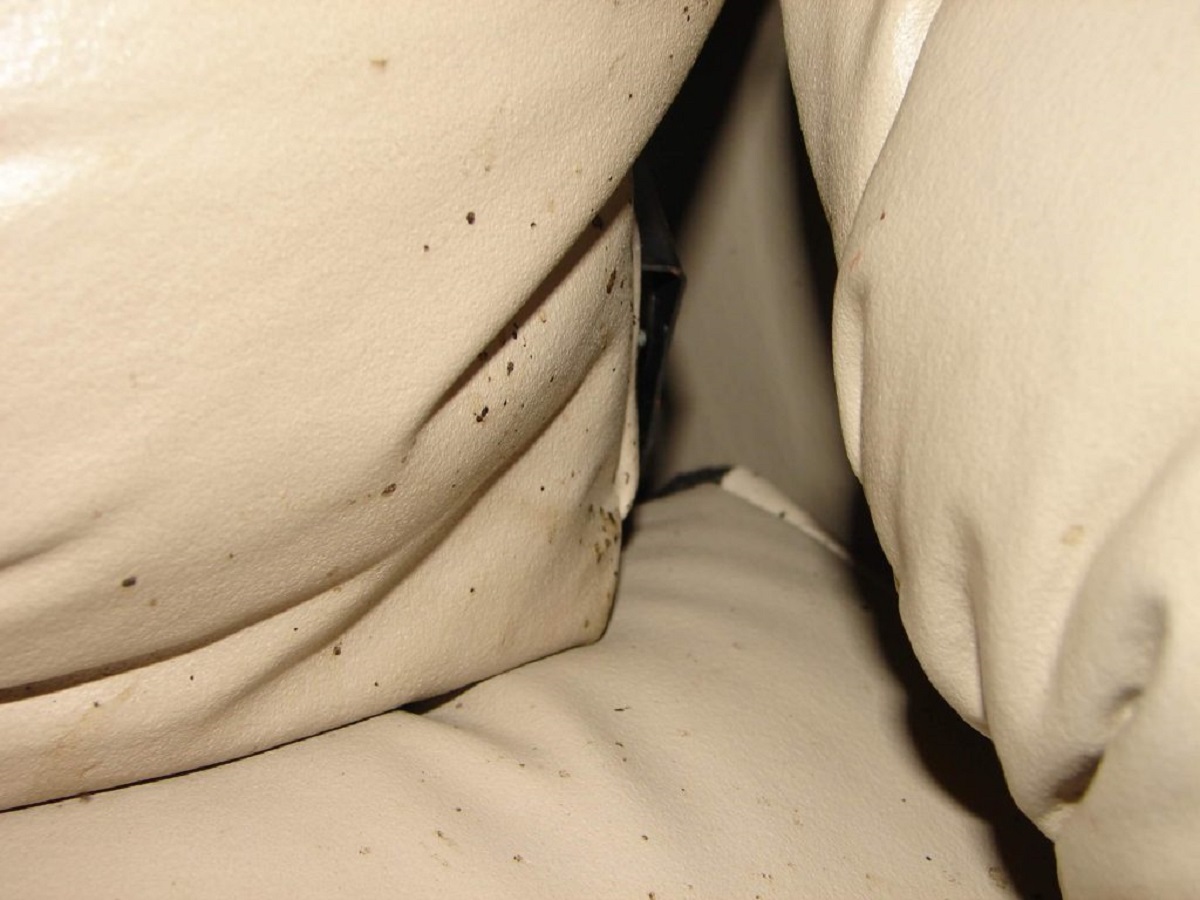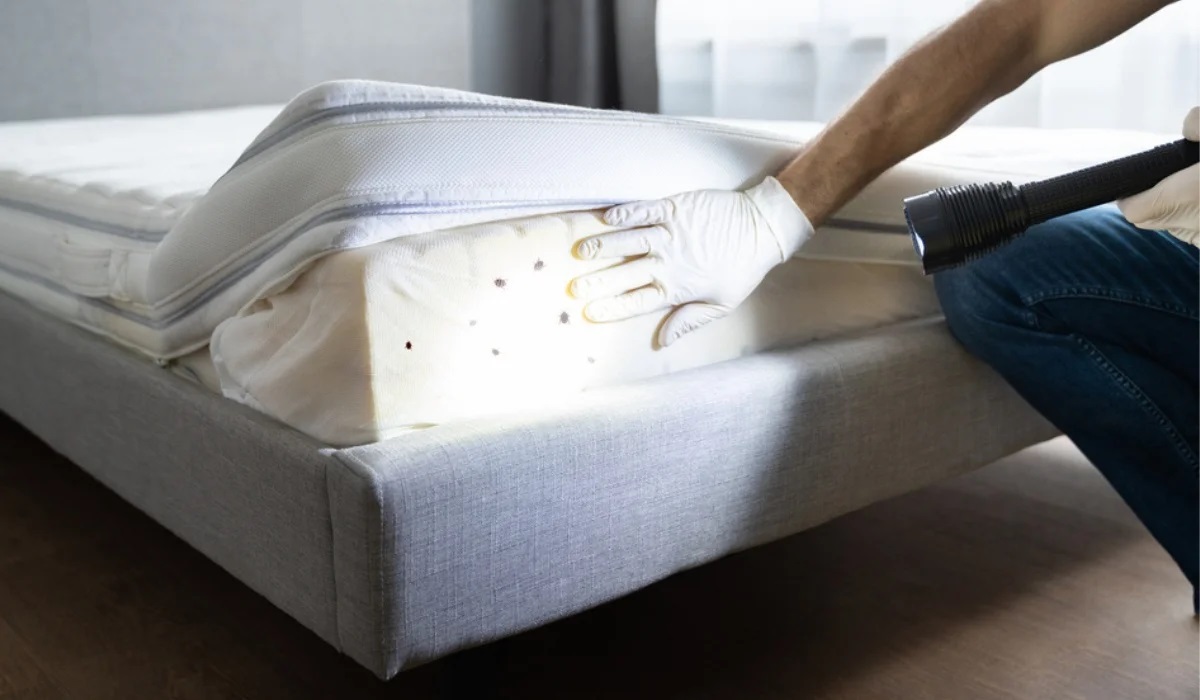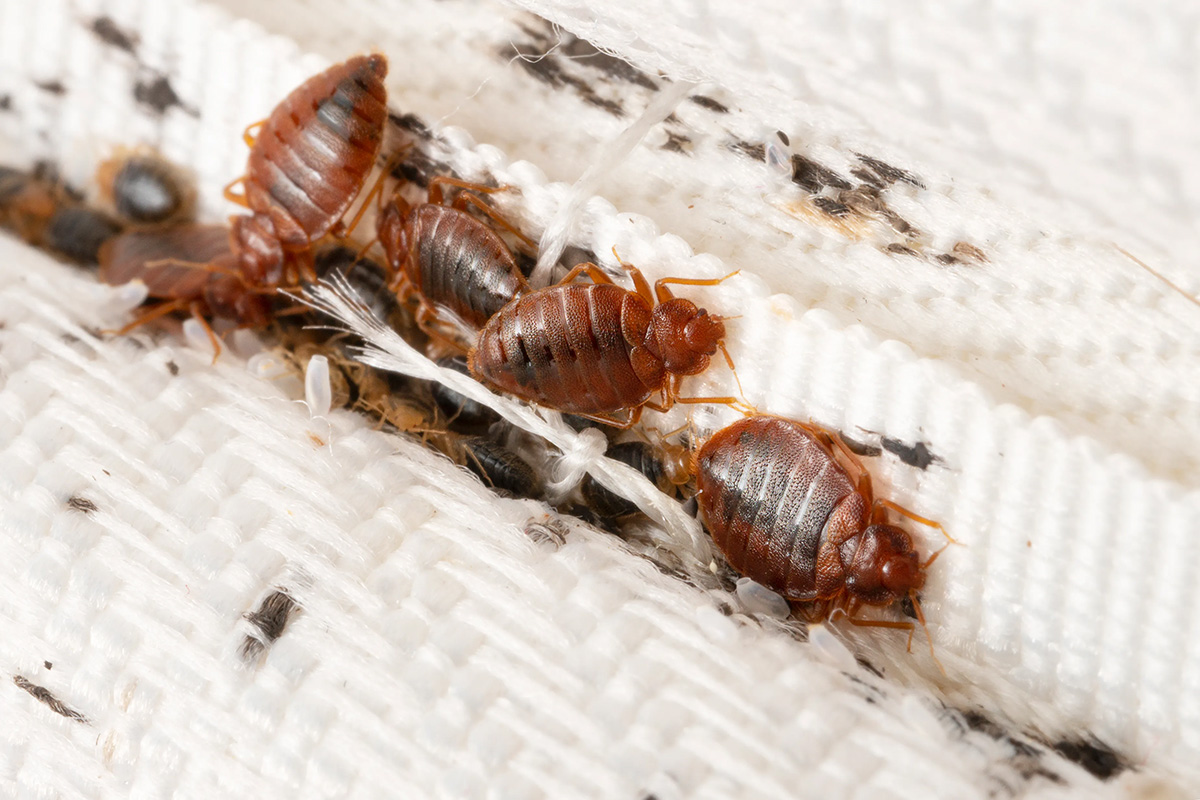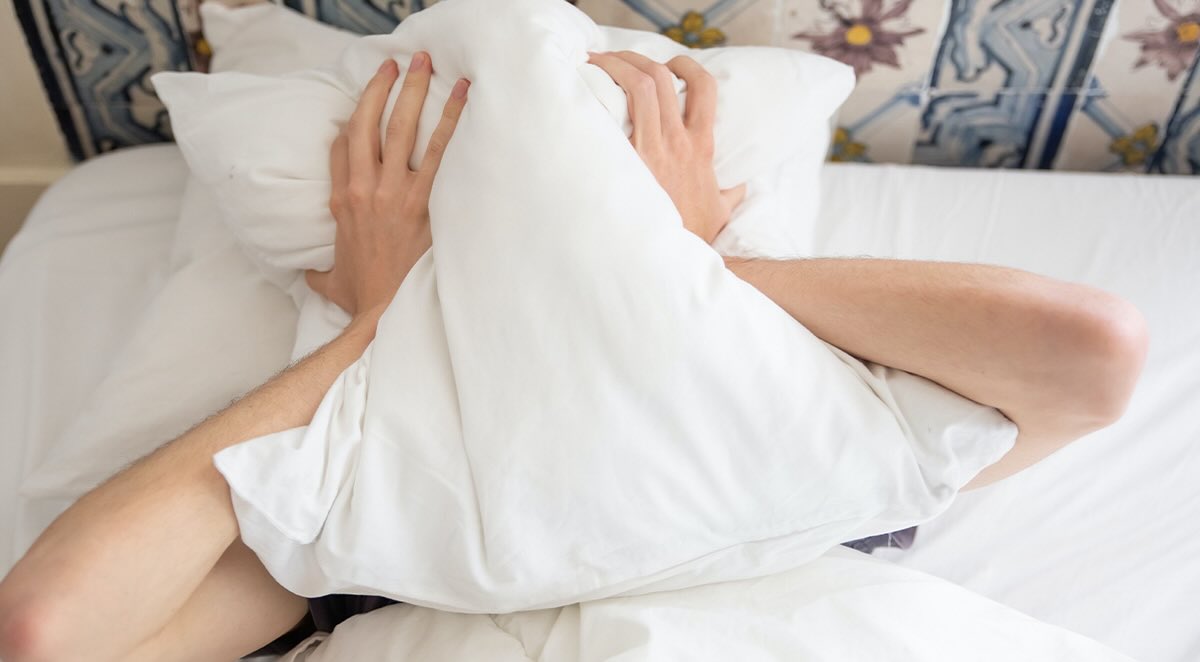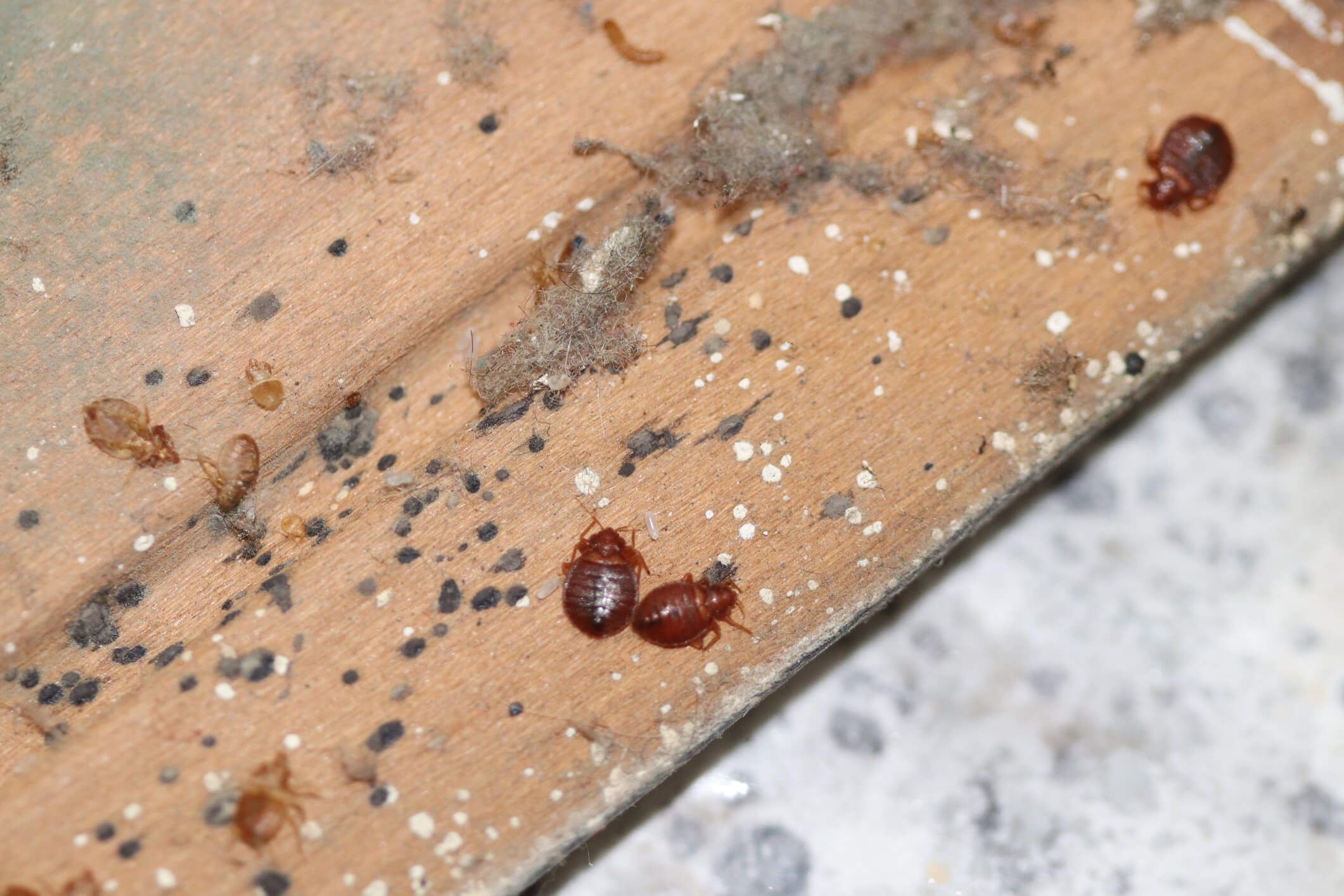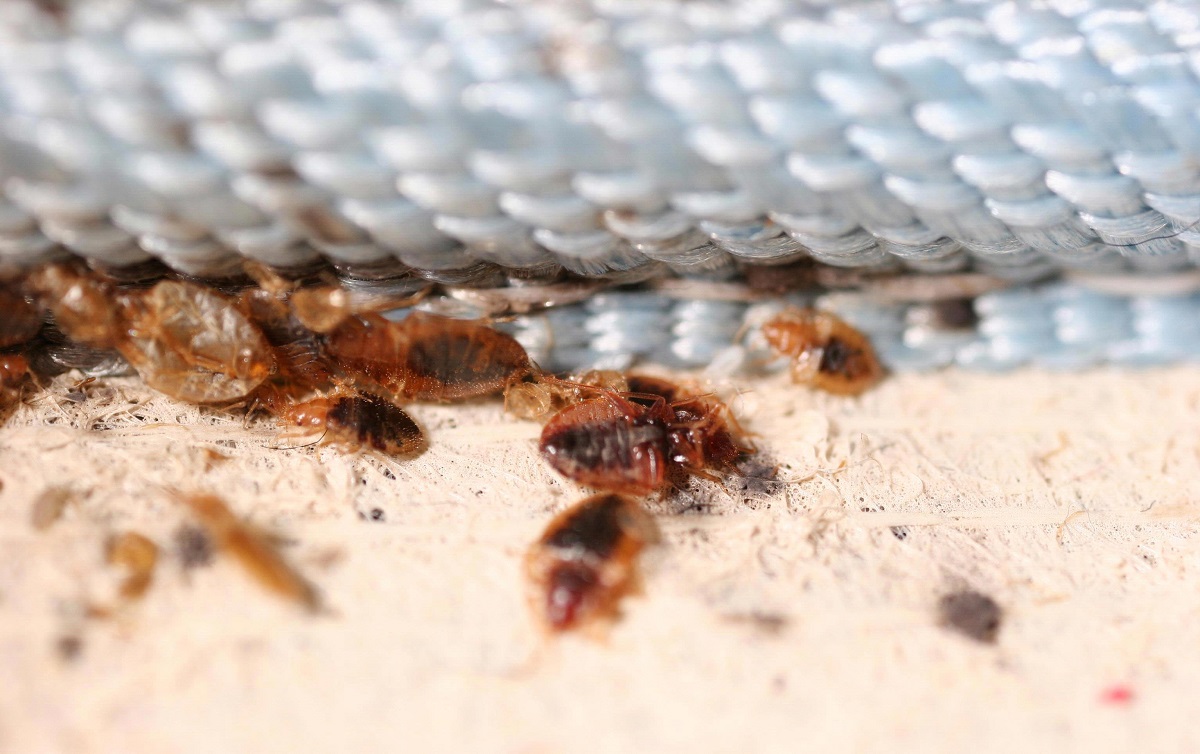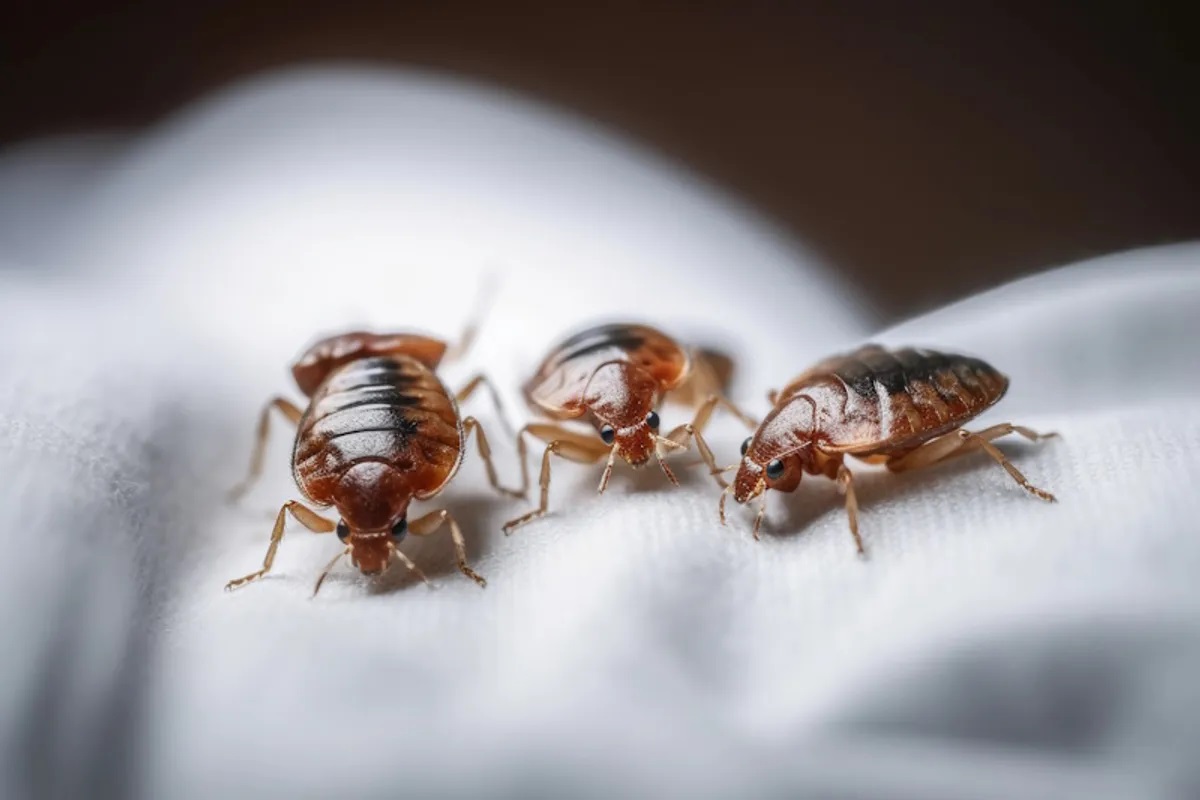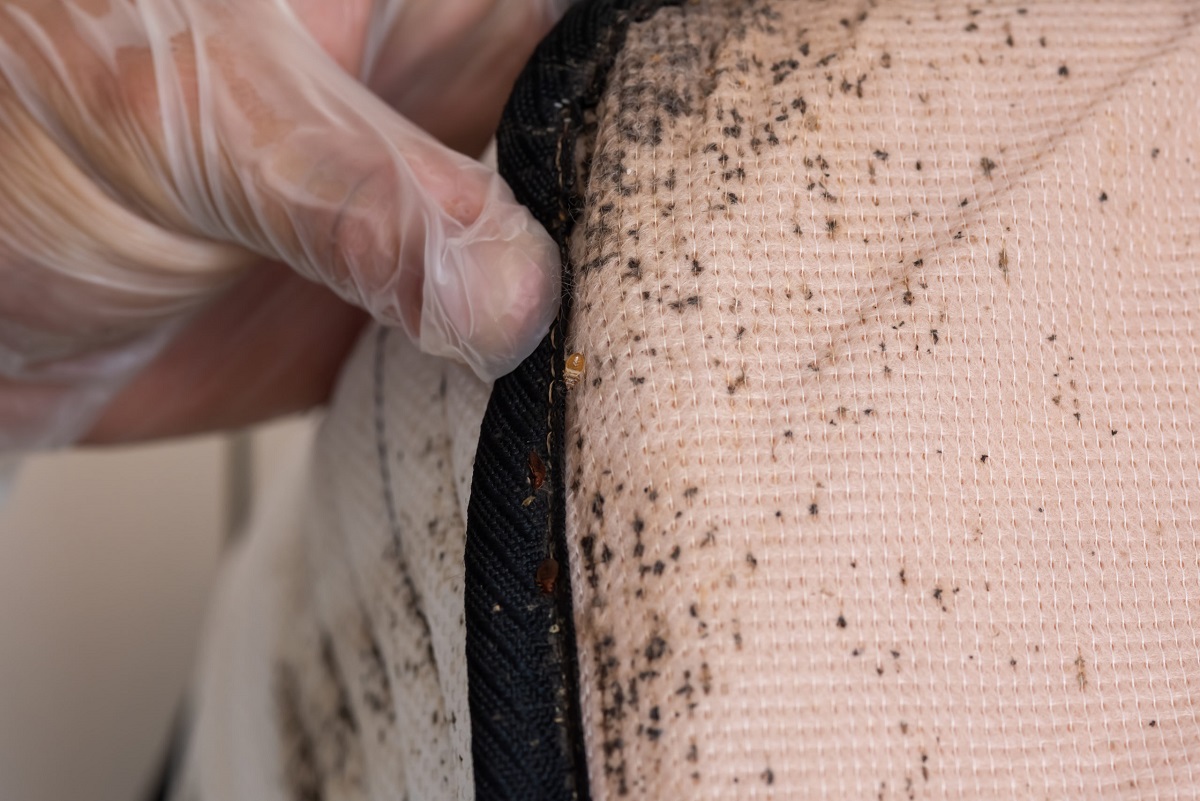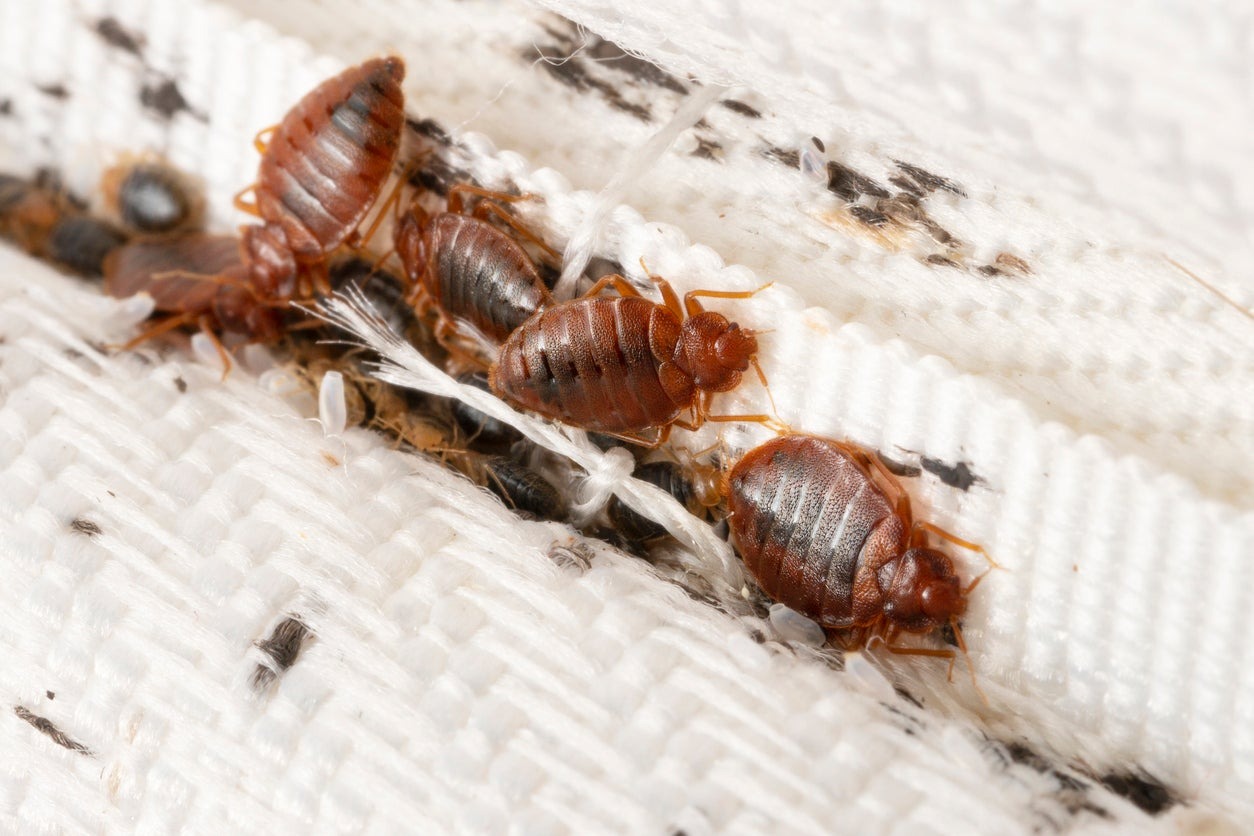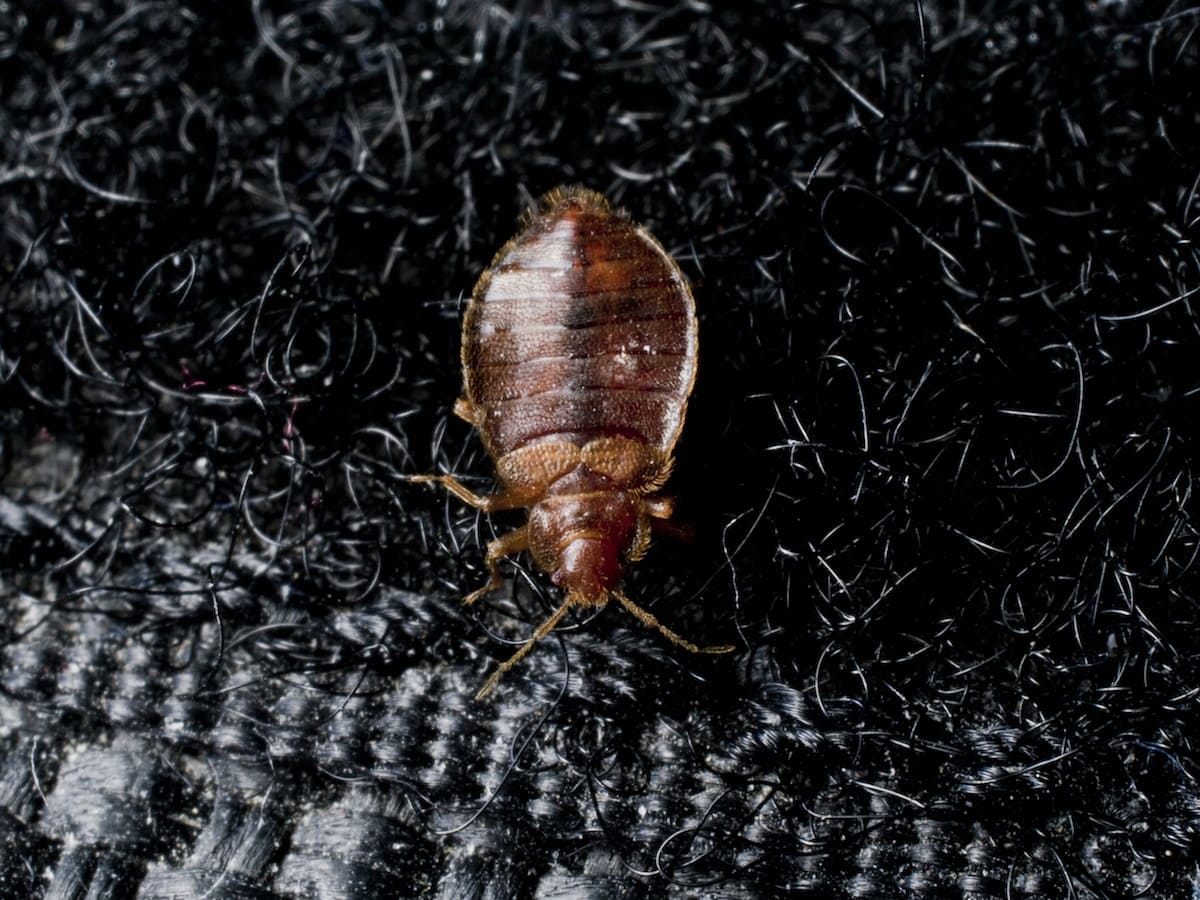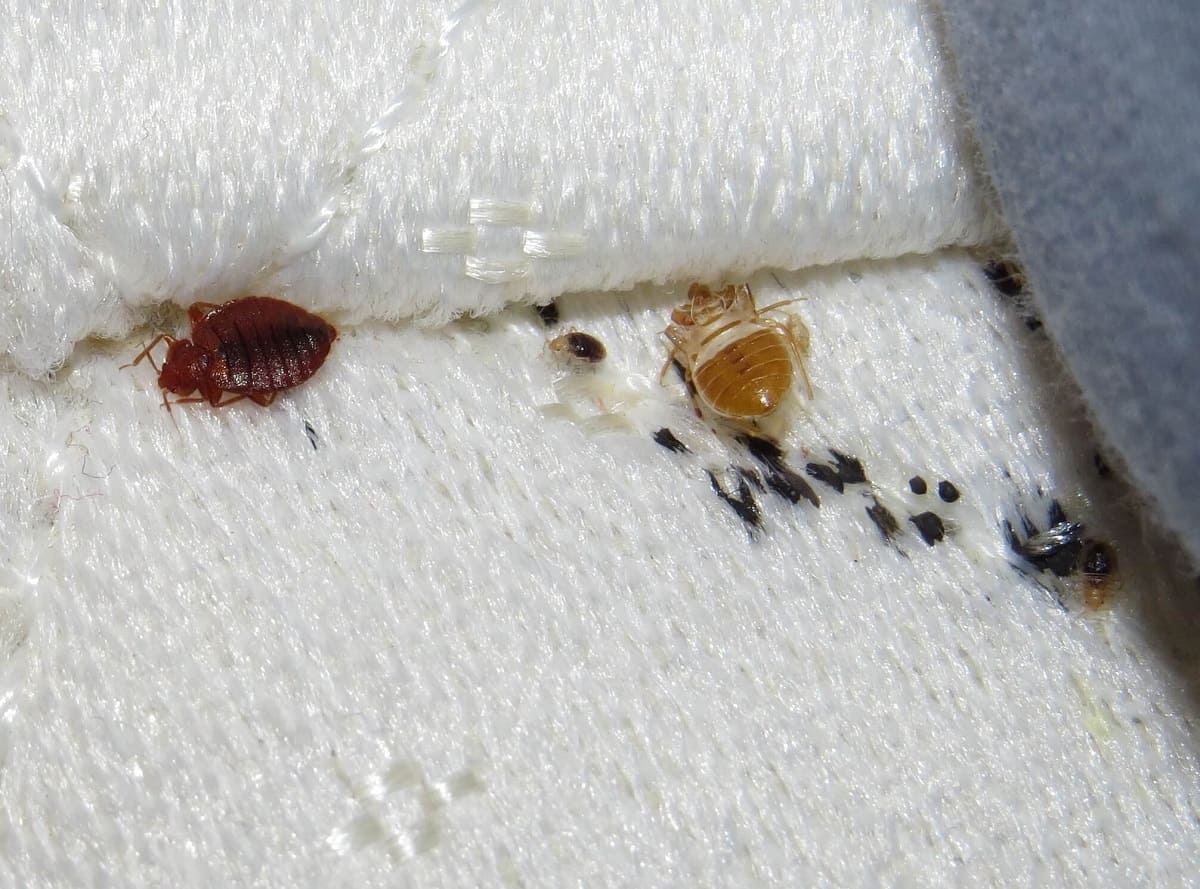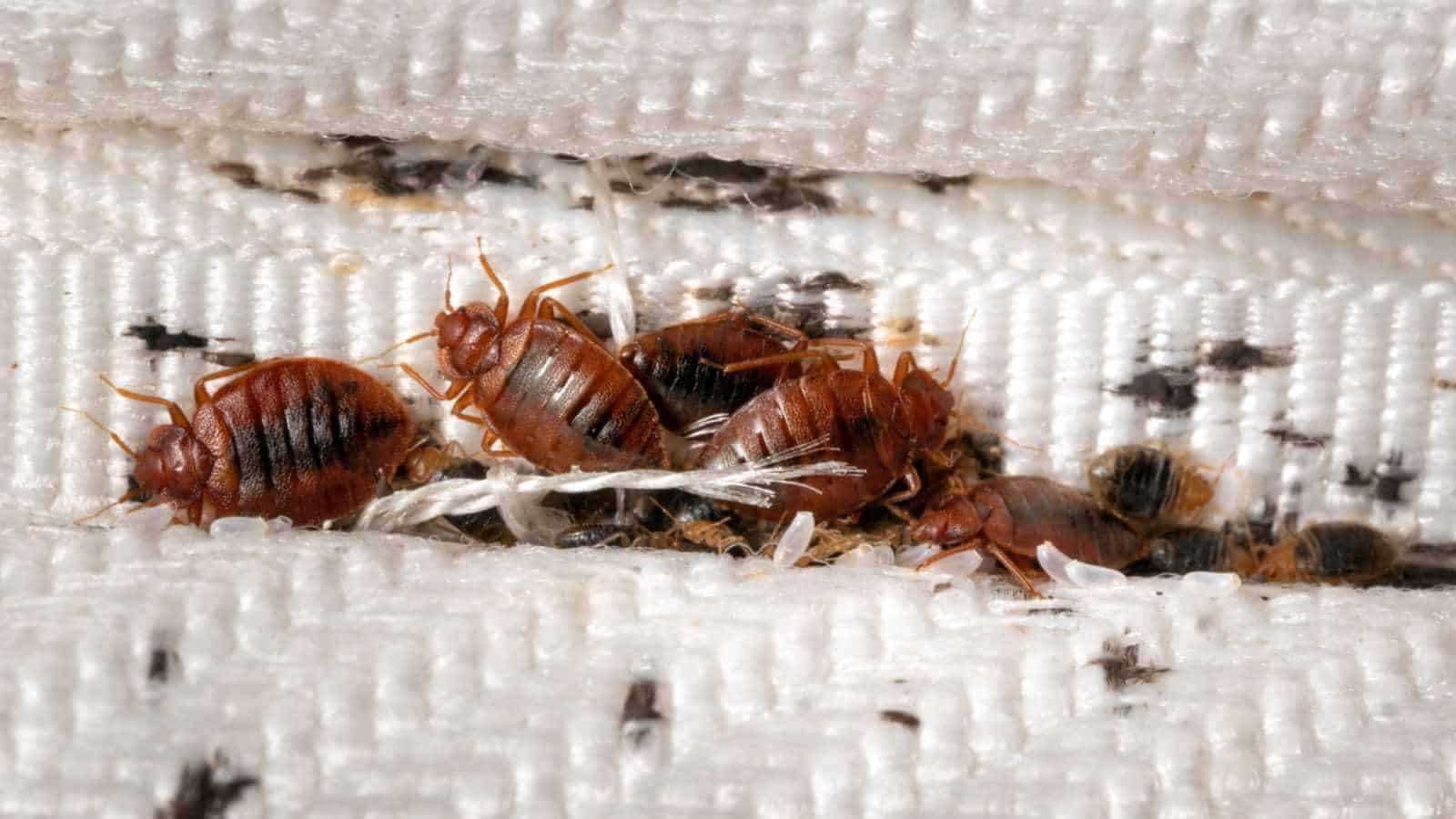Home>Furniture>Bedroom Furniture>How Do I Get Bed Bugs
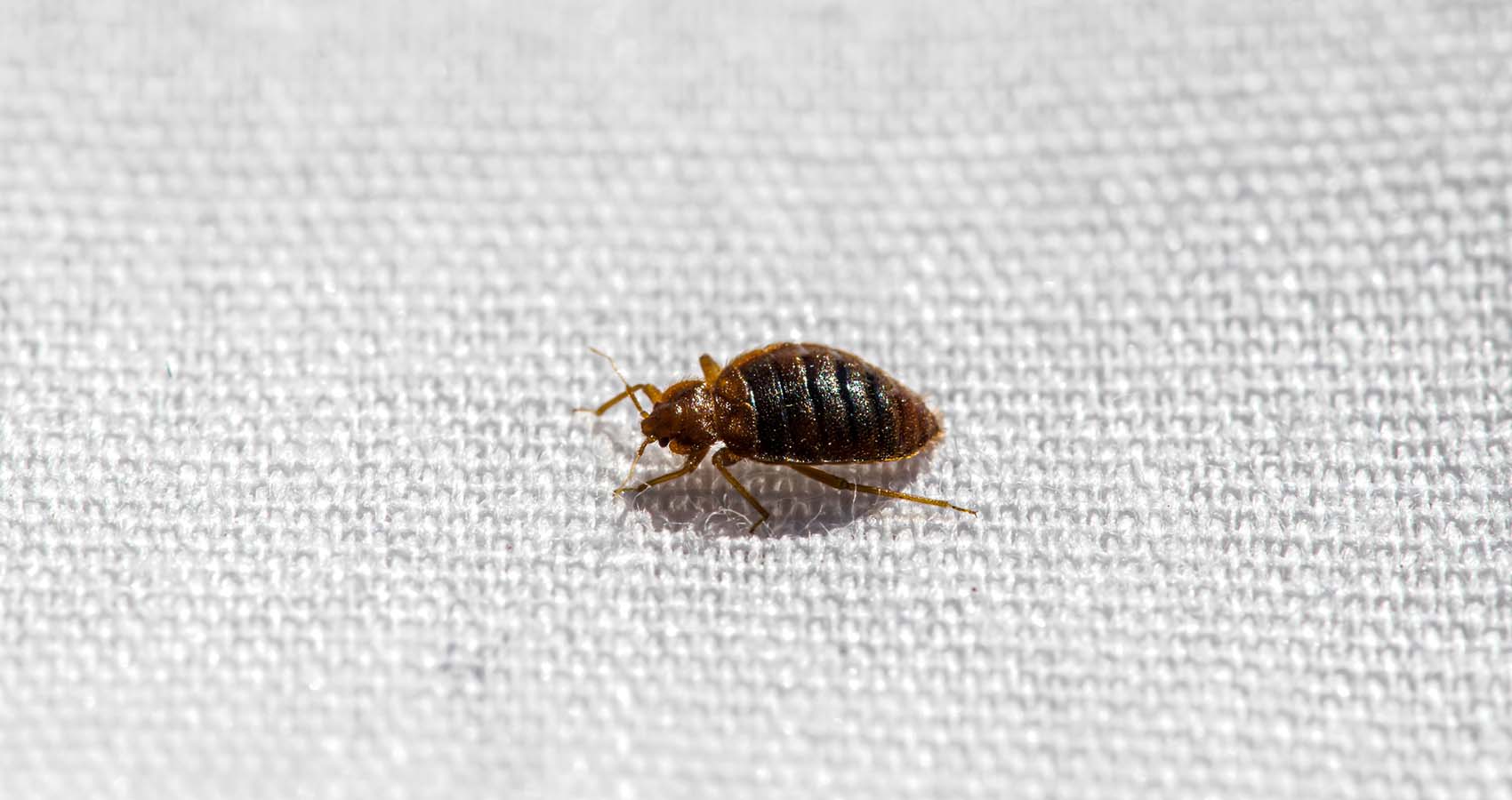

Bedroom Furniture
How Do I Get Bed Bugs
Modified: March 6, 2024
Looking for bedroom furniture? Learn how to prevent and get rid of bed bugs in your home with our helpful guide.
(Many of the links in this article redirect to a specific reviewed product. Your purchase of these products through affiliate links helps to generate commission for Storables.com, at no extra cost. Learn more)
Introduction
When it comes to getting a good night’s sleep, nothing is more important than a comfortable and well-designed bedroom. From a cozy mattress to the perfect pillows, every element plays a crucial role in creating a serene and relaxing environment. However, one issue that can quickly turn this sanctuary into a nightmare is the presence of bed bugs.
Bed bugs are small, reddish-brown insects that feed on the blood of humans and animals. They are nocturnal pests that hide in crevices and cracks during the day and come out at night to feed on their unsuspecting hosts. These tiny vampires are not only an annoyance but also a health risk, as their bites can cause itching, allergies, and even secondary skin infections.
In order to maintain a peaceful and comfortable bedroom, it is essential to understand how to detect, prevent, and eradicate bed bugs effectively. In this comprehensive guide, we will explore the signs of bed bug infestations, the common places they hide, how they spread, and most importantly, how to get rid of them.
Whether you have encountered these unwanted pests or simply want to be prepared, this article is your ultimate resource for all things bed bug related. So, let’s dive in and learn how to tackle the challenge of getting rid of bed bugs.
Key Takeaways:
- Bed bugs are sneaky pests that hide in various places, so it’s important to inspect your bedroom for signs like bites, blood stains, and musty odors. Regular vacuuming and reducing clutter can help prevent infestations.
- If you suspect a bed bug infestation, take immediate action by washing infested items, using insecticides, and encasing mattresses. Consider hiring professional help for thorough eradication and long-term prevention.
Read more: How Do People Get Bed Bugs
Understanding Bed Bugs
Before we delve into the details of getting rid of bed bugs, it’s important to have a solid understanding of these persistent pests. Bed bugs belong to the family Cimicidae and are small, oval-shaped insects that measure about the size of an apple seed. They are flat and wingless, with a reddish-brown color.
Despite their name, bed bugs are not limited to infesting beds. They can be found in various locations, such as couches, chairs, carpets, and even cracks in walls. They are attracted to warmth and carbon dioxide, which is why they typically target sleeping areas.
Bed bugs have existed for thousands of years and have adapted to live alongside humans. While they are not known to transmit diseases, their presence can cause significant distress and discomfort. It is essential to be able to identify signs of a bed bug infestation to take appropriate action.
These resilient pests can survive for several months without feeding and can withstand extreme temperatures. Additionally, they reproduce rapidly, making it crucial to address an infestation as soon as it is detected.
Understanding the life cycle of a bed bug is also important. They go through a process called “molt” where they shed their exoskeletons five times before reaching adulthood. Each stage of the life cycle is known as an “instar.” The time it takes for a bed bug to progress from one instar to the next depends on factors such as temperature and food availability.
Now that we have a better understanding of what bed bugs are and how they operate, let’s move on to explore the signs of a bed bug infestation and how to spot them in your bedroom.
Signs of Bed Bugs
Identifying the signs of a bed bug infestation early on is crucial in preventing a small problem from turning into a full-blown infestation. Here are some telltale signs to look out for:
- Bites on the Skin: Bed bug bites are often the first sign of an infestation. They appear as small, red, itchy welts on the skin, usually in a line or cluster.
- Blood Stains: Bed bugs feed on blood, so it’s common to find blood stains on your sheets, pillowcases, or pajamas. These stains may appear as small dots or smears.
- Dark Spots: Bed bugs leave behind dark spots of excrement on sheets, mattress seams, and other infested areas. These spots are often small and resemble ink stains.
- Eggshells and Shed Skins: As bed bugs molt and progress through their life cycle, they leave behind empty eggshells and shed skins. These can be found near their hiding places, such as mattress seams and crevices.
- Musty Odor: Bed bugs release pheromones that can emit a musty, sweet odor. If you notice a distinct smell, it might indicate a bed bug infestation.
It’s important to note that not everyone reacts to bed bug bites, so the presence of bites alone may not be a reliable indicator. However, the combination of these signs should raise suspicion and prompt further investigation.
Inspecting your bedroom thoroughly is the next step in confirming a bed bug infestation. Look for the bugs themselves, paying attention to mattress seams, bed frames, headboards, and nearby furniture. Use a flashlight to illuminate dark hiding spots and a magnifying glass to get a closer look.
If you have confirmed a bed bug infestation, it’s essential to take immediate action to prevent the problem from spreading and causing further discomfort. In the next section, we will explore the common places where bed bugs hide, helping you target your efforts in eradicating them.
Common Places to Find Bed Bugs
Bed bugs are adept at hiding in various locations, making them challenging to eliminate. Understanding their preferred hiding spots can help you focus your efforts on areas where they are most likely to be found. Here are some common places to check for bed bugs:
- Mattresses and Box Springs: Bed bugs often hide in the seams, tufts, and folds of mattresses and box springs. Inspect these areas thoroughly, paying attention to the corners and edges.
- Furniture: Sofas, chairs, and upholstery can provide cozy hiding spots for bed bugs. Check the seams, cushions, and any cracks or crevices where they could hide.
- Bedding and Linens: Bed bugs may hide in the folds and creases of sheets, pillowcases, blankets, and duvet covers. Inspect these items closely, particularly around the edges and seams.
- Headboards and Bed Frames: Bed bugs often reside in the cracks and crevices of headboards and bed frames. Remove the bedding and thoroughly examine these areas, paying attention to joints and screw holes.
- Nightstands and Dressers: These furniture pieces provide hiding spots for bed bugs, especially in the corners and drawers. Remove clutter and thoroughly inspect these areas, including any cracks or crevices.
- Electrical Outlets: Bed bugs can squeeze into tiny spaces, including electrical outlets and switch plates. Remove the faceplates and inspect these areas carefully.
- Baseboards and Wall Trim: Bed bugs may hide in the gaps between baseboards and walls, as well as in wall trim. Examine these areas closely, using a flashlight to spot any signs of activity.
- Luggage and Personal Belongings: When traveling or staying in infested areas, bed bugs can hitch a ride on luggage, clothing, and personal belongings. Inspect these items thoroughly before bringing them into your home.
Remember, bed bugs are excellent hiders and can squeeze into the tiniest of spaces. It’s essential to be thorough in your inspection and not overlook any potential hiding spots.
Now that you know where to look for bed bugs, it’s time to understand how these pests spread and take measures to prevent their infestation. We will explore this in the next section.
How Bed Bugs Spread
Bed bugs are skilled hitchhikers and can spread from one location to another with ease. Understanding how they spread can help you take precautions to prevent their infestation in your home. Here are the primary ways bed bugs can be transported:
- Travel: One of the most common ways bed bugs spread is through travel. They can latch onto luggage, clothing, and other personal belongings, allowing them to be unknowingly transported from infested areas such as hotels, vacation rentals, or public transportation.
- Used Furniture and Clothing: Bed bugs can also be found in used furniture, mattresses, and clothing. When acquiring second-hand items, carefully inspect them for any signs of infestation before bringing them into your home.
- Adjacent Infestations: In multi-unit buildings such as apartments or hotels, bed bugs can easily move between units through shared walls, electrical outlets, or pipes. If one unit becomes infested, neighboring units are at a higher risk of getting infested as well.
- Visitors: Having guests over who have bed bugs in their home can also lead to an infestation. These pests can hitch a ride on their belongings and find their way into your bedroom or living areas.
- Public Spaces: Although less common, bed bugs can be found in public spaces such as movie theaters, libraries, and public transportation. They can attach themselves to your clothing or belongings, allowing them to infest your home once you return.
It’s important to note that bed bugs do not discriminate based on cleanliness. They are attracted to warmth and carbon dioxide, not dirt or clutter. Therefore, even the cleanest of homes can fall victim to a bed bug infestation.
Now that we understand how bed bugs spread, it’s crucial to take preventative measures to protect your home. In the next section, we will explore some practical steps you can take to minimize the risk of a bed bug infestation.
Inspect second-hand furniture and clothing for signs of bed bugs before bringing them into your home. Wash and dry bedding and clothing on high heat to kill any potential bed bugs.
Read more: How Do Bed Bugs Get Inside A Mattress
Preventing Bed Bugs
Preventing a bed bug infestation is much easier than dealing with one. By following some proactive measures, you can greatly reduce the chances of these pests infiltrating your home. Here are some essential tips for preventing bed bugs:
- Inspect Second-Hand Items: Before bringing in used furniture, mattresses, or clothing, thoroughly inspect them for signs of bed bugs. Pay close attention to seams, crevices, and any dark spots that may indicate an infestation.
- Be Cautious When Travelling: When staying in hotels or vacation rentals, inspect the mattress, headboard, and furniture for any signs of bed bugs. Keep your luggage elevated and away from the bed, and upon returning home, unpack and wash your clothes immediately.
- Use Protective Covers: Encase your mattress and box spring in protective covers that are designed to keep bed bugs out. These covers create a physical barrier, making it difficult for bed bugs to infest your sleeping area.
- Reduce Clutter: Decluttering your living spaces can help minimize hiding spots for bed bugs. By reducing the number of items and keeping your surroundings tidy, it becomes easier to spot any signs of an infestation.
- Regularly Vacuum: Use a vacuum cleaner with a brush attachment to vacuum your mattress, furniture, baseboards, and floors regularly. Empty the vacuum cleaner bag or canister immediately after each use to prevent the potential spread of bed bugs.
- Be Wary of Second-Hand Books: Bed bugs can hide within the pages of used books. If you purchase second-hand books, inspect them thoroughly or consider placing them in a sealed bag and freezing them for a few days to kill any potential bed bugs.
- Seal Cracks and Crevices: Seal any cracks or crevices in your walls, baseboards, and furniture using caulk or another suitable sealant. This helps eliminate potential hiding spots for bed bugs.
While these preventive measures can significantly reduce the risk of a bed bug infestation, it’s important to stay vigilant and address any potential signs of bed bugs promptly. In the next section, we will explore how to detect the presence of bed bugs in your home.
Detecting Bed Bugs
Detecting the presence of bed bugs early on is crucial for effective extermination. By knowing how to inspect for signs of these pests, you can take swift action to address the issue. Here are some steps to help you detect bed bugs:
- Perform a Thorough Visual Inspection: Start by visually inspecting your mattress, box springs, bed frame, and headboard. Look for adult bed bugs, nymphs (young bed bugs), and bed bug eggs. Pay attention to seams, folds, and crevices where they often hide.
- Check Bedding and Furniture: Remove the sheets, pillowcases, and mattress covers. Look for blood stains, rusty spots, or dark bed bug excrement. Examine the folds and edges of furniture, such as sofas and chairs, as well.
- Use a Flashlight and Magnifying Glass: Bed bugs are tiny, so a flashlight and magnifying glass can help you spot them more easily. Shine the flashlight into cracks, crevices, and corners, and use the magnifying glass to get a closer look.
- Inspect Other Areas of the Room: Bed bugs can hide in various places, so expand your search beyond the bed area. Check baseboards, electrical outlets, picture frames, and nearby furniture for signs of bed bugs.
- Look for Cast Skins and Eggshells: Bed bugs molt as they go through their life cycle, leaving behind shed skins and empty eggshells. These can be found near their hiding spots and are a clear indication of their presence.
- Pay Attention to Musty Odor: Bed bugs release a distinct, musty odor. If you notice an unpleasant smell in your bedroom that you can’t explain, it could be a sign of a bed bug infestation.
If you discover any signs of bed bugs during your inspection, it is crucial to take immediate action to prevent the infestation from spreading. In the next section, we will explore effective methods for eradicating bed bugs.
Please note that if you are unsure about performing a thorough inspection or suspect a severe infestation, it is best to seek professional help from an experienced pest control company.
Eradicating Bed Bugs
Dealing with a bed bug infestation requires a comprehensive approach to ensure complete eradication. While it can be challenging, following the right steps can help you eliminate these pests effectively. Here are some methods to consider when eradicating bed bugs:
- Wash and Dry Infested Items: Immediately remove and wash all bedding, clothing, and linens in hot water. Use the highest temperature setting that is safe for the fabric and dry them on high heat for at least 30 minutes to kill any bed bugs or eggs present.
- Vacuum Thoroughly: Vacuum all infested areas, including mattresses, box springs, furniture, and carpets. Pay attention to seams, cracks, and crevices where bed bugs may hide. Dispose of the vacuum bag or empty the canister into a sealed plastic bag after each use.
- Steam Treatment: Bed bugs are sensitive to high temperatures, so using a steam cleaner on infested areas can be an effective method. Make sure the steam temperature reaches at least 160°F (71°C) to kill bed bugs and their eggs.
- Use Insecticides: Insecticides registered for use against bed bugs can be applied to infested areas. Follow the instructions carefully, and consider hiring a professional pest control company with experience in bed bug eradication to ensure proper application and safety.
- Encase Mattresses and Furniture: Encase mattresses, box springs, and pillows in specially designed bed bug-proof covers. These covers trap any remaining bed bugs inside, preventing them from feeding and eventually causing their demise.
- Eliminate Clutter: Reduce clutter in your living spaces as much as possible. By minimizing hiding spots, you make it harder for bed bugs to survive and easier for you to detect and eliminate them.
- Consider Heat Treatment: Heat treatment involves raising the temperature of an area to a lethal level for bed bugs. Specialized heaters are used to treat the entire room or infested items, reaching temperatures that kill bed bugs and their eggs.
It’s important to note that the effectiveness of DIY bed bug treatments may vary depending on the severity of the infestation. For severe or persistent infestations, it is advisable to seek professional help from a licensed pest control company, as they have the knowledge, experience, and tools to effectively eliminate bed bugs.
Remember that eliminating bed bugs requires patience and persistence. It may take multiple treatments and ongoing preventive measures to ensure complete eradication. Regular monitoring and inspections are also crucial to catch any re-infestations early on.
By following these steps and seeking professional assistance when necessary, you can successfully rid your home of bed bugs and restore a peaceful and bug-free environment.
Hiring Professional Help
Dealing with a bed bug infestation can be a daunting task, especially if it is severe or persistent. In such cases, hiring professional help from a licensed pest control company is highly recommended. Here are some reasons why professional assistance is valuable when it comes to handling bed bugs:
- Expertise and Experience: Pest control professionals have the knowledge, training, and experience to effectively identify, treat, and exterminate bed bug infestations. They understand the behavior and habits of bed bugs and can employ the most appropriate methods for eradication.
- Safe and Efficient Treatment: Professional pest control companies have access to specialized equipment, tools, and insecticides that are more effective in eliminating bed bugs. They know which products to use, where to apply them, and how to ensure the safety of occupants and pets during the treatment process.
- Thorough Inspection and Treatment: Professional exterminators will conduct a comprehensive inspection to identify the extent of the infestation and locate all hiding spots. They will then design a customized treatment plan that targets the specific areas, ensuring thorough eradication of bed bugs.
- Long-Term Prevention: Pest control professionals not only eliminate existing bed bug infestations but also provide recommendations for preventing future infestations. They can advise on proper maintenance, suggest preventive measures, and offer guidance to reduce the possibility of re-infestation.
- Peace of Mind: Hiring professionals allows you to have peace of mind, knowing that qualified experts are handling the situation. They can address any concerns, answer your questions, and provide ongoing support throughout the process.
- Cost-Effectiveness: While hiring professional help may involve an upfront cost, it can be more cost-effective in the long run. Professional exterminators have the expertise to eliminate the infestation quickly and effectively, reducing the chances of prolonged or repeated treatments.
When selecting a pest control company, ensure they are licensed, insured, and have a good reputation. Take the time to read reviews, ask for recommendations, and compare quotes from different companies to make an informed decision.
Remember, bed bug extermination is not a one-time task but an ongoing process. Even after professional treatment, it is important to follow their recommendations, maintain vigilance, and take preventive measures to avoid future infestations.
By hiring professional help, you can overcome the challenges of bed bug eradication and restore a pest-free environment in your home.
Read more: How To Get Rid Of Bed Bugs
Conclusion
Dealing with a bed bug infestation can be a frustrating and stressful experience, but with the right knowledge and approach, it is possible to overcome this problem. By understanding the signs of bed bugs and where they typically hide, you can detect their presence early on and take immediate action.
Prevention is key when it comes to bed bugs, so implementing proactive measures like thorough inspections, reducing clutter, and regularly vacuuming can significantly reduce the risk of an infestation. However, if you do find yourself facing a bed bug problem, it’s important to tackle it swiftly and effectively.
Eradicating bed bugs requires a combination of methods such as washing infested items, vacuuming, steaming, using insecticides, encasing mattresses, and eliminating clutter. These steps, along with ongoing monitoring and preventive practices, can help you achieve successful eradication.
In some cases, hiring professional help from a licensed pest control company is the best course of action. Experienced professionals have the expertise, tools, and treatments necessary to efficiently and safely eliminate bed bugs from your home.
Remember, patience is key throughout this process. It may take time and effort to completely rid your home of bed bugs, but with diligence and persistence, you can restore a peaceful and hygienic environment.
Finally, it’s essential to stay informed and educated about bed bugs and their prevention. Regularly inspect your sleeping areas and stay vigilant when traveling or acquiring second-hand items. By staying proactive and taking preventive measures, you can minimize the risk of future bed bug infestations.
In conclusion, by understanding the signs, prevention methods, detection techniques, eradication strategies, and the option of professional help, you can effectively tackle bed bug infestations and create a haven of rest and relaxation in your bedroom once again.
Frequently Asked Questions about How Do I Get Bed Bugs
Was this page helpful?
At Storables.com, we guarantee accurate and reliable information. Our content, validated by Expert Board Contributors, is crafted following stringent Editorial Policies. We're committed to providing you with well-researched, expert-backed insights for all your informational needs.

